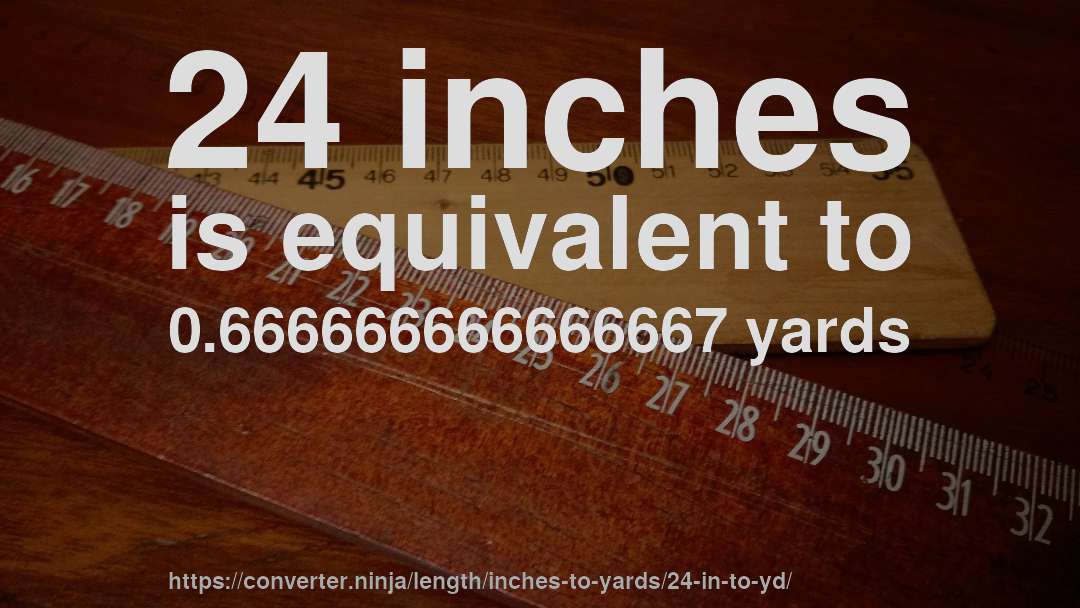
24 inches is equivalent to 0.666666666666667 yards.
We know (by definition) that: 1 in ≈ 0.027777778 yd
We can set up a proportion to solve for the number of yards.
1 in 24 in ≈ 0.027777778 yd x ydNow, we cross multiply to solve for our unknown x:
x yd ≈ 24 in 1 in * 0.027777778 yd → x yd ≈ 0.666666672 ydConclusion: 24 in ≈ 0.666666672 yd
The inverse of the conversion factor is that 1 yard is equal to 1.5 times 24 inches.
It can also be expressed as: 24 inches is equal to 1 1.5 yards.
Approximation
An approximate numerical result would be: twenty-four inches is about zero point six seven yards, or alternatively, a yard is about zero times twenty-four inches.
Units involved
This is how the units in this conversion are defined:
Inches
The inch (abbreviation: in or ″) is a unit of length in the imperial and United States customary systems of measurement now formally equal to 1⁄36 yard but usually understood as 1⁄12 of a foot. Derived from the Roman uncia (twelfth), inch is also sometimes used to translate related units in other measurement systems, usually understood as deriving from the width of the human thumb. Traditional standards for the exact length of an inch have varied in the past, but since the adoption of the international yard during the 1950s and 1960s it has been based on the metric system and defined as exactly 2.54 cm.
Yards
The yard (abbreviation: yd) is an English unit of length, in both the British imperial and US customary systems of measurement, that comprises 3 feet or 36 inches. It is by international agreement in 1959 standardized as exactly 0.9144 meters. A metal yardstick originally formed the physical standard from which all other units of length were officially derived in both English systems.
[1] The precision is 15 significant digits (fourteen digits to the right of the decimal point).
Results may contain small errors due to the use of floating point arithmetic.ncG1vNJzZmibn6PDpr7Tnqlnppmjt6J7y56loKyYZLavr8eeqmasn2LGor7DrGZrbF2eu27AzmawnWc%3D